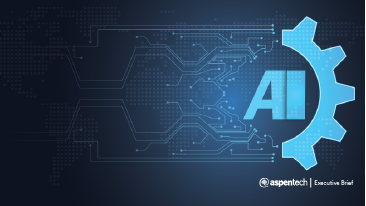Many companies feel overwhelmed by the discussion of digital technologies, especially artificial intelligence (AI). Leaders often wonder, where do we apply it to the challenges in our business? How can we chart our success? This uncertainty is understandable considering the technology’s complexity and rapid evolution, but understanding and integrating AI is increasingly critical to competitiveness in the chemical industry.
AspenTech is meeting this need by embedding AI capability throughout its asset optimization portfolio. Incorporating AI into existing operating technology (OT) and information technology (IT) enables easier adoption, and when combined with domain expertise in the chemical industry, brings new levels of asset performance. Industrial AI is the term used to describe this application to industrial challenges, but considering AspenTech’s four decades of domain expertise in chemicals and energy, we’re uniquely qualified to deliver Industrial AI solutions.
Aspen Hybrid Models™ are at the center of these capabilities, which combine AI with first-principle model design and domain expertise. Engineers can now build enriched process models faster using machine learning to leverage simulation or plant data, integrating application knowledge including first principles and engineering constraints, without requiring deep process or AI expertise. These hybrid models can be used to optimize operations, create soft sensors (such as color or viscosity), design new equipment or integrate asset-wide processes such as crude-to-chemicals.
Many customers are working with these new technologies from AspenTech in a variety of chemical processes, from bulk to specialty chemicals, and for polymers. Hybrid models can also be applied to develop virtual sensors like color or stiffness that are key indicators of product quality but cannot be predicted from first principles.
A multinational energy and petrochemicals company has already implemented Aspen Hybrid Models to reduce the grade transition time in their plastics production. The customer created a reactor model to determine key performance properties (melt flow index and density) and was able to lower the time between low density polyethylene (LDPE) grade transitions by 50%. The company reduced waste and boosted productivity for an estimated annual savings above $700,000.
Hybrid models can also be applied to challenging processes and equipment including solvent extraction, membranes, and extruders. For all of these applications, better understanding how process conditions influence product quality can help engineers predict emissions and reduce waste: insight that can help companies progress to achieving sustainability targets.
AI can also enhance advanced process control (APC) technology, making it easier to use APC across a broader range of scenarios. Embedding AI gives operators in-context assistance, using large quantities of collected data to provide insight to better reflect actual operations and augment future operations. This capability allows companies to execute APC model tuning more quickly and with less expertise, reducing the engineering support required.
The diversity and complexity of chemical processes have limited the application of APC because of the effort required – AI assist lowers that barrier so more chemical manufacturing operations can take advantage of this valuable technology. For the first time, APC can now be employed on batch processes to enable closed-loop control to boost quality and productivity, while limiting the need for manual intervention. When combined with the online monitoring capabilities of multi-variate analysis, AspenTech now provides a holistic platform to boost the profitability of specialty chemical producers with a range of technology solutions to be deployed based on customer preference and capability.
With these capabilities, we are enabling our customers to take their first step toward the Self-Optimizing Plant, progressing toward operations where human and autonomous decision-making work in tandem to achieve the most profitable and sustainability-focused outcome. Building in this capability will also enable companies to more effectively respond to market changes and reposition for new opportunities demanded by the circular economy.
This is a journey for all of us; one we must take as our markets evolve and stakeholders demand new approaches to address global environmental issues.






Leave A Comment